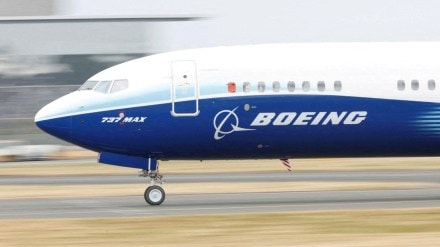The Federal Aviation Administration (FAA) recently issued a safety alert to airlines regarding potential rudder movement issues in certain Boeing 737 airplanes. This alert followed recommendations from the National Transportation Safety Board (NTSB) after a February 2023 incident involving a United Airlines Boeing 737 MAX 8. During that flight, the rudder pedals became stuck in the neutral position while landing at Newark Liberty International Airport. Although no one was injured, the incident raised concerns about malfunctioning rudder components in 737 aircraft.
NTSB Urges Action on Rudder Risks
Following its investigation, the NTSB recommended that Boeing and the FAA take immediate corrective action after discovering risks with certain rudder components, particularly the rudder rollout guidance actuator, in some 737 models. In response, the FAA directed pilots and airlines to review the procedure for responding to a jammed rudder and emphasised the importance of detecting rudder issues during landing approaches. However, the FAA has not yet required airlines to replace the problematic parts, opting instead to continue collecting data before deciding on mandatory corrective measures.
Global Impact and Affected Aircraft
The NTSB also noted that more than 40 international operators and 16 U.S.-registered Boeing 737 aeroplanes may still be using rudder components that pose safety risks. These affected planes span different models of the Boeing 737 series, including the Next Generation variant. Boeing has since reminded operators of the actions to take if pilots encounter a restricted rudder while working with regulators to monitor the issue.
August 2023 Investigation and Component Defects
In August 2023, Boeing informed airlines about potential rudder system issues through a Multi Operator Message. Subsequent investigations revealed that up to 271 faulty rudder components may have been installed on aircraft currently in service. Additionally, both the FAA and Boeing have warned that moisture accumulation could freeze and potentially cause the rudder to jam during flight or landing, making the issue more dangerous.
The FAA and NTSB are also investigating a separate incident involving an Aeromexico Boeing 737 MAX in March 2023, where the rudder pedals experienced restrictions along with unusual sounds in the flight deck. Although no injuries were reported, repeated rudder malfunctions in Boeing 737 aircraft have prompted regulatory bodies to thoroughly examine the safety of these components.
Boeing’s efforts to address the current rudder issues come after a challenging history with the 737 series, particularly the 737 MAX, grounded globally following two deadly crashes in 2018 and 2019. While the 737 MAX returned to service in 2020 with updated safety measures, including modifications to the Maneuvering Characteristics Augmentation System (MCAS), the model and the broader 737 family continue to face scrutiny over safety concerns.
Importance of Safety Protocols and Oversight
As Boeing continues working to resolve these challenges, the ongoing concerns with the 737 series highlight the critical importance of stringent safety protocols, robust regulatory oversight, and transparent communication between manufacturers, regulators, and airlines. These efforts are vital to maintaining confidence in the safety and reliability of commercial aviation.
